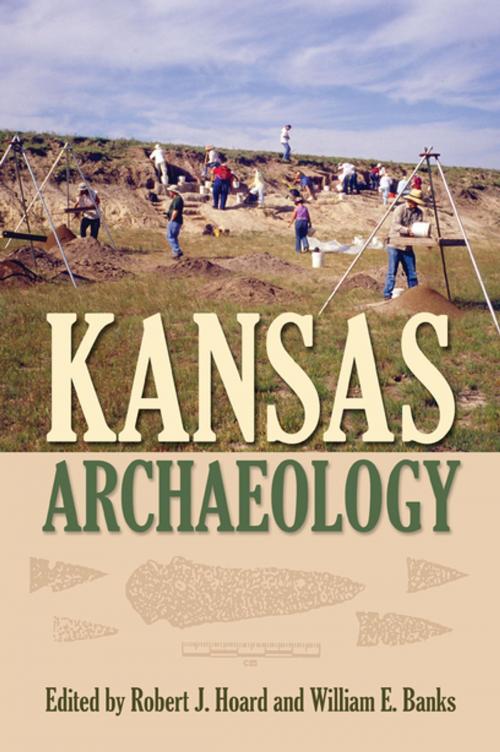Kansas Archaeology
Nonfiction, History, Americas, United States, State & Local, Social & Cultural Studies, Social Science, Archaeology| Author: | ISBN: | 9780700624591 | |
| Publisher: | University Press of Kansas | Publication: | January 6, 2017 |
| Imprint: | University Press of Kansas | Language: | English |
| Author: | |
| ISBN: | 9780700624591 |
| Publisher: | University Press of Kansas |
| Publication: | January 6, 2017 |
| Imprint: | University Press of Kansas |
| Language: | English |
From Kanorado to Pawnee villages, Kansas is a land rich in archaeological sites—nearly 12,000 known—that testify to its prehistoric heritage. This volume presents the first comprehensive overview of Kansas archaeology in nearly fifty years, containing the most current descriptions and interpretations of the state's archaeological record. Building on Waldo Wedel's classic Introduction to Kansas Archaeology, it synthesizes more than four decades of research and discusses all major prehistoric time periods in one readily accessible resource.
In Kansas Archaeology, a team of distinguished contributors, all experts in their fields, synthesize what is known about the human presence in Kansas from the age of the mammoth hunters, circa 10,000 B.C., to Euro-American contact in the mid-nineteenth century. Covering such sites as Kanorado-one of the oldest in the Americas-the authors review prehistoric peoples of the Paleoarchaic era, Woodland cultures, Central Plains tradition, High Plains Upper Republican culture, Late Prehistoric Oneota, and Great Bend peoples. They also present material on three historic cultures: Wichita, Kansa, and Pawnee.
The findings presented here shed new light on issues such as how people adapted to environmental shifts and the impact of technological innovation on social behavior. Included also are chapters on specialized topics such as plant use in prehistory, sources of stone for tool manufacture, and the effects of landscape evolution on sites. Chapters on Kansas culture history also reach into the surrounding region and offer directions for future inquiry. More than eighty illustrations depict a wide range of artifacts and material remains.
An invaluable resource for archaeologists and students, Kansas Archaeology is also accessible to interested laypeople—anyone needing a summary of the material remains that have been found in Kansas. It demonstrates the major advances in our understanding of Kansas prehistory that have applications far beyond its borders and point the way toward our future understanding of the past.
From Kanorado to Pawnee villages, Kansas is a land rich in archaeological sites—nearly 12,000 known—that testify to its prehistoric heritage. This volume presents the first comprehensive overview of Kansas archaeology in nearly fifty years, containing the most current descriptions and interpretations of the state's archaeological record. Building on Waldo Wedel's classic Introduction to Kansas Archaeology, it synthesizes more than four decades of research and discusses all major prehistoric time periods in one readily accessible resource.
In Kansas Archaeology, a team of distinguished contributors, all experts in their fields, synthesize what is known about the human presence in Kansas from the age of the mammoth hunters, circa 10,000 B.C., to Euro-American contact in the mid-nineteenth century. Covering such sites as Kanorado-one of the oldest in the Americas-the authors review prehistoric peoples of the Paleoarchaic era, Woodland cultures, Central Plains tradition, High Plains Upper Republican culture, Late Prehistoric Oneota, and Great Bend peoples. They also present material on three historic cultures: Wichita, Kansa, and Pawnee.
The findings presented here shed new light on issues such as how people adapted to environmental shifts and the impact of technological innovation on social behavior. Included also are chapters on specialized topics such as plant use in prehistory, sources of stone for tool manufacture, and the effects of landscape evolution on sites. Chapters on Kansas culture history also reach into the surrounding region and offer directions for future inquiry. More than eighty illustrations depict a wide range of artifacts and material remains.
An invaluable resource for archaeologists and students, Kansas Archaeology is also accessible to interested laypeople—anyone needing a summary of the material remains that have been found in Kansas. It demonstrates the major advances in our understanding of Kansas prehistory that have applications far beyond its borders and point the way toward our future understanding of the past.















